Living Planet
Nature · Earth · ClimateNature Notes: May 2020
'Belles' of beauty
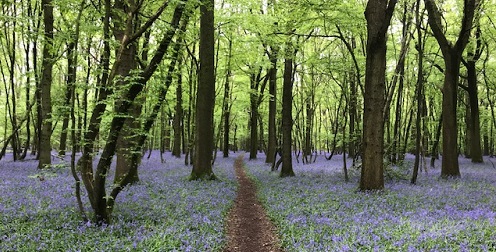
May is usually an explosion of activity when everything seems to happen at once, but the nature activity in April in Slinfold has already been so full and rich it's a wonder how this will be surpassed! How blessed we are to have been uplifted daily by the variety and abundance of life and colour around us, especially in a time when 'life' in the rest of the world has been shutting down.
Birds and Bluebells were the highlights around our village last month: tits, wrens, robins, chaffinches, sparrows, jackdaw, doves, blackbirds, thrush and magpies, flitted and dipped from tree to tree in the garden, some nesting in and amongst it, whilst pairs of pheasants scratched the soil beneath the feeder. Further afield woodpeckers hammered their spring messages in the woods, I spied a tree-creeper circling his chosen home, a skylark soared heavenward, scattering its hypnotic song like seeds over my head as I swished through the grass of an open field and I was startled by the azure blue and sunburnt orange of a kingfisher bursting out of its burrow, near the roots of a tree, by a gurgling stream where a couple of yellow wagtails dabbled and pecked in the shallows ...
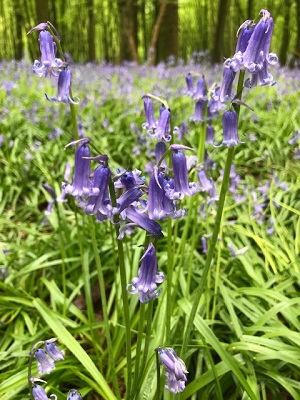
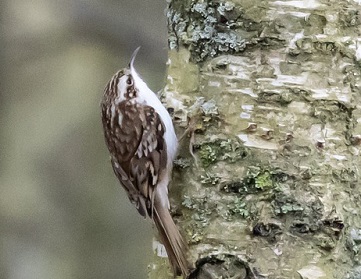
Slinfold's woodland bluebells are and have been particularly awe-inspiring. Winding, blossom strewn paths, leading deep into swathes of blue/lavender, waves of scents and smells under fresh, verdant, lime green leaves. They defy description as they change in height and colour, light and scent. Often fringed on the edges of paths by violets and recently dotted with some Early Purple Orchids, these delicate, fragile, fronds of bells, also known as 'cuckoo's shoes' have been flooding our woodland floors and ancient moss-covered sculptural tree-stumps, for weeks, sweeping up the anemones and glowing under sun dappled trees. I've been drinking in their unmistakable green-floral scent from their gently nodding their heads, rich in nectar which attract pollinating insects including bees. Many neighbours and friends in Slinfold and indeed all over Sussex have been noticing an abundance of Bumble Bees this year in their gardens which is a great thing! I've also noticed what appears to be a 'tameness' of birds and mammals from robins to toads, a wren to even a bank vole that almost let me stroke it!
During this time of Corona Virus, I'm aware how much we mustn't touch, but when gossamer strands of caterpillar thread lightly tickle my cheekbones or a pollen petal unsettled by the wind dusts my lips, I inadvertently put a hand up. Here in nature, it's easy to forget there's a parallel universe going on. This is far more real and here and now as the earth is kissed by the warmth of the sun. Light and shade, dappled leaves, life is pulsing, pushing, bursting forth. A life that's full of possibility and light and courage. There's a physical and metaphorical unwinding of tendrils in the canopy above and on the floor beneath. Beech leaves are now fully unfurled and the oaks are halfway there. Streams trickle, catching the first and last of the light. Damp wild garlic aroma fills the air as the Ransoms unwrap their starry flowers. I need to sense and touch the world around me as I walk barefoot across the lawn in the evening on toes in cushions of wet evening dew.
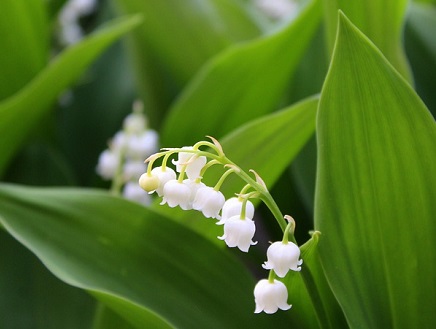
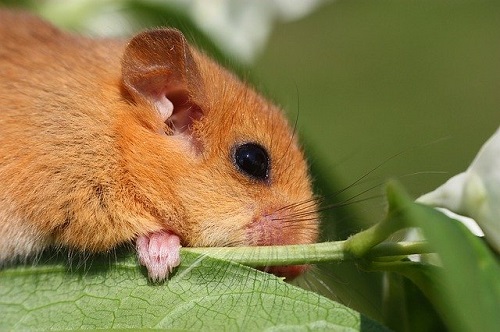
One of my other favourite wild flowers is the Lily of the Valley - representing chastity, humility and purity and traditionally given on MayDay - (1st May) in France to loved ones. May is the 'Fertile' month, a time when the migrant birds are back (watch for the swifts, swallows and cuckoo), insects are buzzing (watch out for Mayflies) and more bats will be leaving their roosts to hunt. Cow Parsley is in the hedgerows and bounteous new flowers are in bloom adding varied scents to the breeze. If you hear loud snuffling and grunting noises in the night it could be hedgehogs as this is their main rutting season and also the shrews that come in and out of my house will be busy mating (although less noisily, female shrews looking for a mate make a small 'peeping' sound.) And watch out for hazel dormice who will be taking advantage of the spring flowers, using them to make summer nests, high up in the hedgerows as they come out of hibernation. I love the image of a snoozing dormouse in a bed of flowers, and I pray that, just like them, whatever else is going on your life, that you may rest and be likewise refreshed and adorned by the beauty and adventures on your doorstep ...